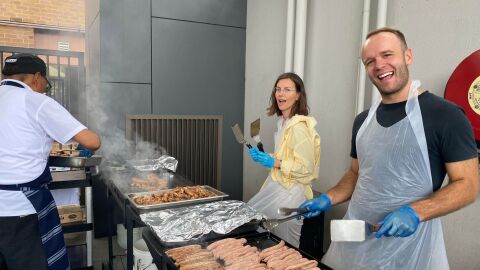“It’s not the fire itself that’s the problem. Large parts of the Australian bush are used to fire, some species even depend on it to reproduce. It’s the intensity and frequency of the fires that’s the problem. We’ve never before seen fires this hot so we don’t know yet exactly how the bush will respond.” Michael Vyse, Science and Planning Manager, Nature in Cities at Greening Australia (GA).
The Australian bushfire crisis of 2019/20 was unprecedented. Vast swathes of the landscape were burnt out, leaving nothing but scorched earth. Organisations like Greening Australia are working hard to try and understand the impact of these fires so they can figure out how best to restore the environment to enable people and wildlife to thrive.
“We’re conducting a series of experiments to see what will survive so we know how to regenerate the landscape after these kinds of fire events. We can’t just restore the environment to what it once was because it will likely never be the same again.
We now have the opportunity to get smart with restoration, we can do habitat restoration so the wildlife comes back whilst having planting designs that should present lower fire risks to communities, houses, schools etc.”

Designing landscapes so that they are more fire resilient is an emerging field of science that is fundamental to minimizing the impact of fires on human populations in the future. But it’s complicated. Not only do organisations like Greening Australia have to consider how to plant in a way that changes the spread of fire near communities, they must account for a rapidly changing climate.
“We understand more about how climate change is impacting the landscape every year, and the science gets more worrying every year so we try and plan for the worst case scenario and plant for that.
We can protect communities by ensuring dense vegetation that provides critical wildlife habitat is buffered by areas with planting designs that can change the way fire spreads through the landscape. There is a growing body of evidence to show this kind of conservation design is effective in protecting established communities.”
The other critical factor for GA bushfire restoration efforts is to ensure there is enough native seed available for restoration projects.
“Without the native seed that we need to design landscapes for bushfire resilience, the model falls down. That’s why we are working on improving harvesting efficiency in the remaining bushland areas and looking to new and innovative ways to effectively ‘farm seed’.”
Designing restoration initiatives that provide bushfire resilient landscapes is a delicate balancing act that involves planting species to provide critical wildlife habitat whilst ensuring established communities are protected by a buffer zone, planted in ways that may slow down the spread of fire. The landscape must then be monitored and managed on a regular basis to ensure it is maintained in that state and not exposed to weeds, feral animals and other disturbances that may upset this balance.
We are proud to be supporting Greening Australia in their important work to build resilience in Australian landscapes. Amazon Australia has provided Greening Australia with $150,000 to support restoration efforts, enabling them to plant in the vicinity of 40,000 trees to help restore our unique and diverse landscapes after the devastation of last summer’s bushfires.
To learn more about Greening Australia or to support their innovative programs to regenerate and restore the Australian environment click here.











